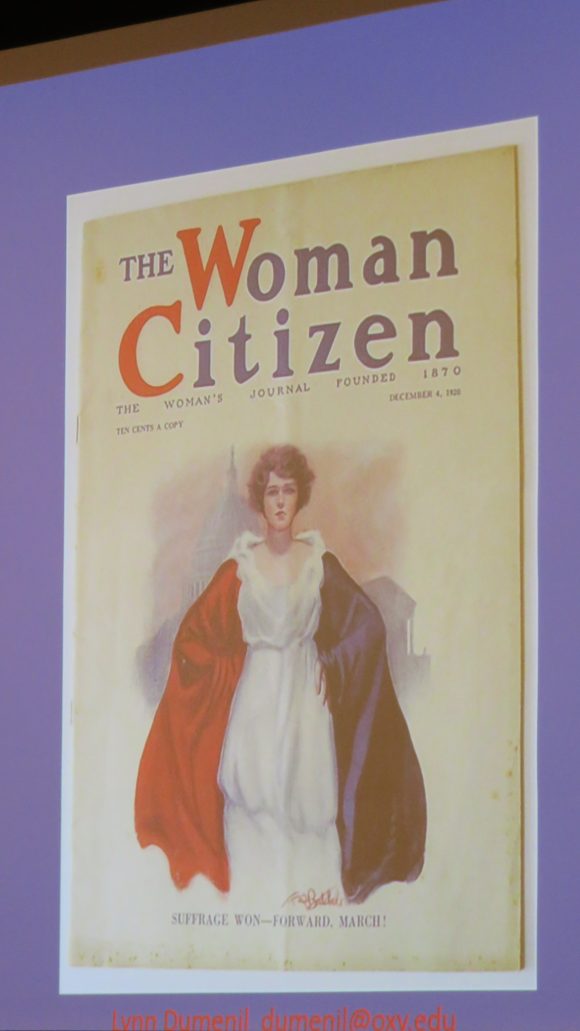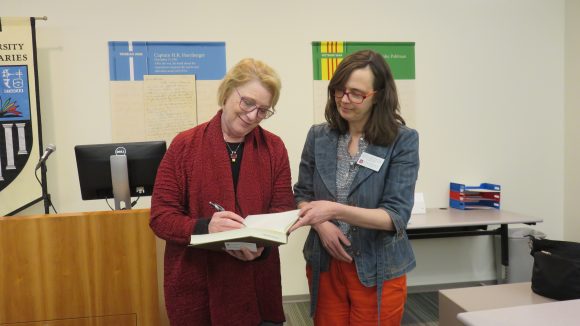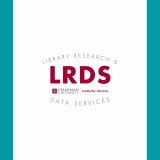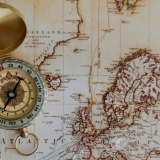Winning the Vote: World War I and the American Suffrage Movement A Talk by Lynn Dumenil, Ph.D.
November 7, 2019
Next year’s presidential election, in November 2020, will mark the 100th anniversary of the first U.S. presidential election in which women in all states had the right to vote, as the 19th Amendment, granting women that right, was passed in 1919. In celebration of this centennial, the Leatherby Libraries currently has a fantastic display on the American suffrage movement, and last Wednesday, October 30th, Lynn Dumenil, Ph.D., Professor Emerita of Occidental College, gave a compelling talk on the relationship between the American suffrage movement and World War I.
Dumenil began her lecture in the latter half of the 19th century, with the origins of the suffrage movement, including the founding of the National American Woman Suffrage Association, or NAWSA. From there, she traced the trajectory of the movement until the beginning of World War I. The war, Dumenil explained, provided several key points for the women of the suffrage movement, which had broken into two key factions at that point, to make their case. These points included the women depicting themselves as morally superior to many male voters, and thus better guardians of the American future, especially in such a fraught time. This take was highlighted by media focusing on women as the mothers of young American men headed off to war, pleading for the opportunity to cast a vote to save their beloved sons. The war also employed many American women in industries and volunteer positions helping the war effort. Posters capitalizing on this role women held often depicted women in uniform, marching in army-like formations, underscoring the importance of women to the war effort. Finally, Dumenil discussed the political pressure suffragists put on President Wilson, both with large signs displayed in Washington, D.C., and with hunger strikes when imprisoned.
Dumenil, who is the author of several books, including The Second Line of Defense: American Woman and World War I, concluded her talk with a question and answer period, in which she addressed several questions posed by the audience, which had a large contingent of students from the War & Society program. She engaged with students on questions about the reference to the recently-freed Russia in the signs suffragists posted pressuring President Wilson, and the difference between the American and British suffrage movements. After her talk, she was kind enough to sign the library’s copy of The Second Line of Defense, which, once the display comes down, will be in circulation and available to be checked out.
Special thanks to Dr. Jennifer Keene, Chair of the Wilkinson College of Arts, Humanities, and Social Sciences, and to the History Department in particular, for generously co-sponsoring this wonderful event.
- Dumenil and Wendy Gonaver, Special Collections & Archives archivist, and curator of the suffrage display.
- Left to right: Gonaver, Dumenil, and Dr. Kimberly Salter, who loaned several of the items in the suffrage display to the Leatherby Libraries.






